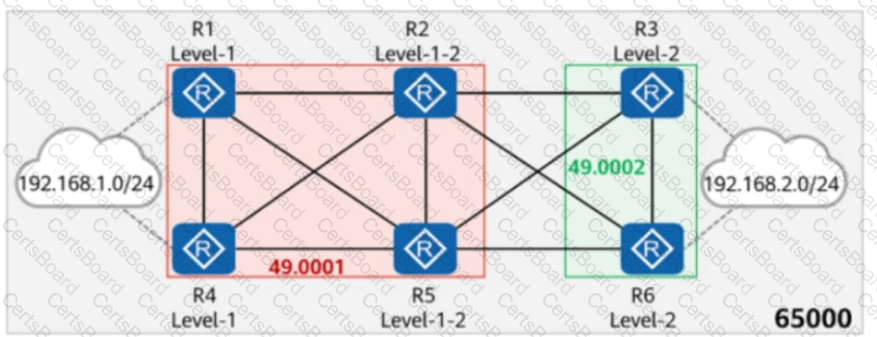On the IS-IS network shown in the figure, R1 imports a default route using the default-route-advertise always level-1 command. Which of the following statements is false?
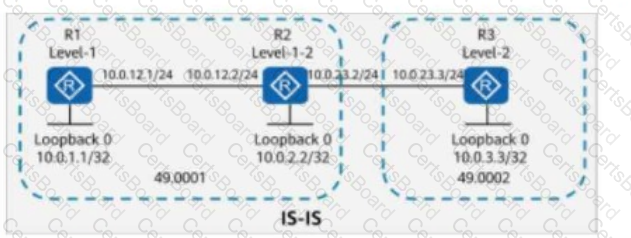
On the OSPFv3 network shown in the figure, OSPFv3 is enabled on the interfaces connecting R1, R2, and R3. The router ID of each router is 10.0.X.X, where X is the number of the router.
If you check detailed information about an LSA on R3, the command output shows that R1 and R2 are DRs on the network.
Options:
There are multiple types of MAC address entries on a switch. Which of the following entries are manually configured and cannot be aged out?
If technology migration on the network affects the services running on the live network, strictly follow the preset operation process and risk control measures during the implementation of the technology migration project. Generally, this type of project is defined as a migration project. Which of the following operations performed on the live network belongs to a non-migration project?
As shown in the figure, an administrator enables port isolation on the switch’s interfaces connected to terminals.
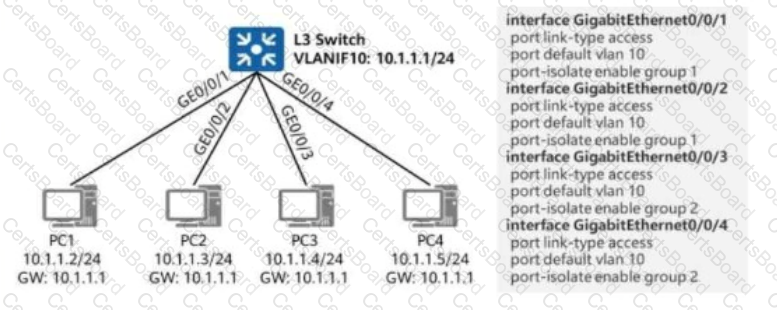
In this scenario, which of the following IP addresses cannot be pinged from PC1?
On the IS-IS network shown in the figure, R1 imports a default route using the default-route-advertise always level-1 command. Which of the following statements are true?
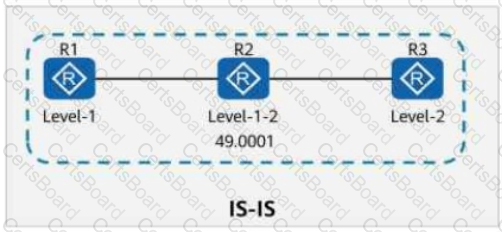
On the OSPFv3 network shown in the figure, OSPFv3 is enabled on the interfaces connecting R1, R2, and R3. The router ID of each router is 10.0.X.X, where X is the number of the router. If you check detailed information about an LSA on R3, the command output shows that the LSA is generated by R2 and describes the IPv6 prefix address associated with the Router-LSA.
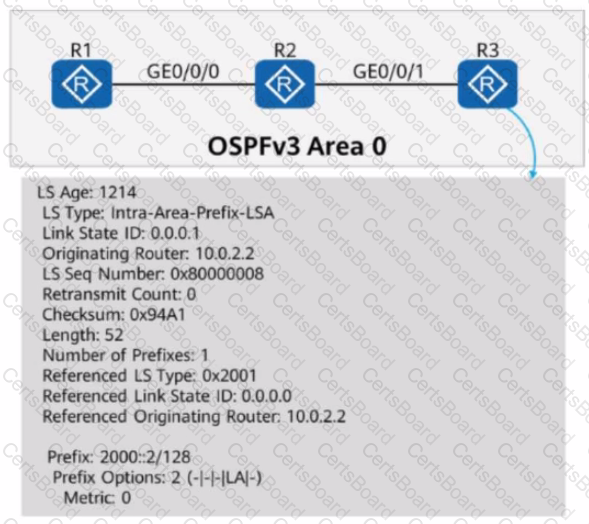
On the OSPFv3 network shown in the figure, area 1 is a common area. R2 generates an Inter-Area-Prefix-LSA to describe the routes of a network segment in the area. Such an LSA exists in both area 0 and area 1.

On the OSPF network shown in the figure, drag the values on the left to the correct positions so that:
Traffic from PC1 to PC2 follows the path:PC1 -> R1 -> R3 -> R2 -> PC2
Traffic from PC2 to PC1 follows the path:PC2 -> R2 -> R1 -> PC1
Which of the following OSPF cost values should be assigned to Cost-A, Cost-B, and Cost-C to achieve this routing behavior?
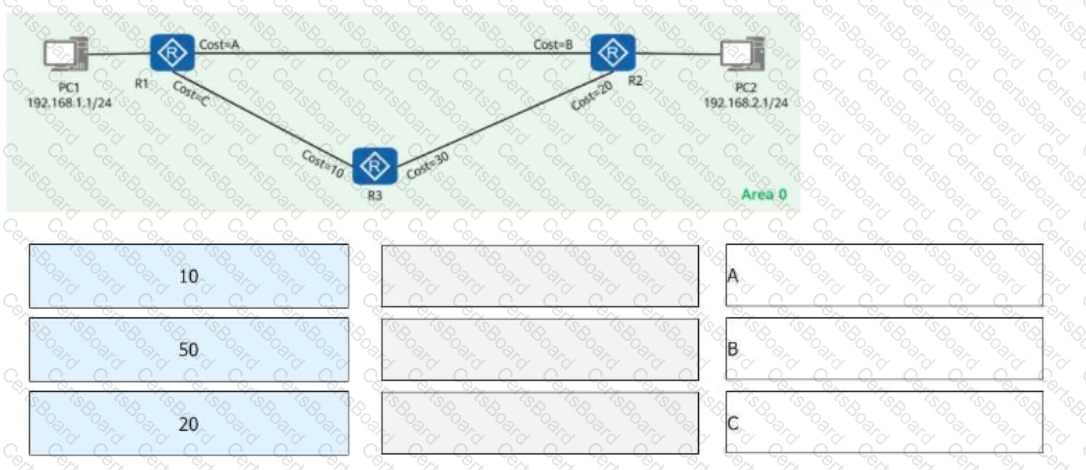
On the network shown in the figure, IS-IS runs on R1, R2, R4, and R5, and the area ID is 49.0001. IS-IS runs on R3 and R6, and the area ID is 49.0002. In AS 65000, R1, R3, R4, and R6 each establish iBGP peer relationships with R2 and R5. R2 and R5 are RRs (Route Reflectors), and R1, R4, R3, and R6 are clients. The iBGP peer relationships are established using Loopback0 on each router, and the router ID is 10.0.0.X/32, where X is the number of the router. R1 and R4 import the external route 192.168.1.0/24 to BGP through the import-route command, and R3 and R6 import the external route 192.168.2.0/24 to BGP through the import-route command. Which of the following statements are true?
